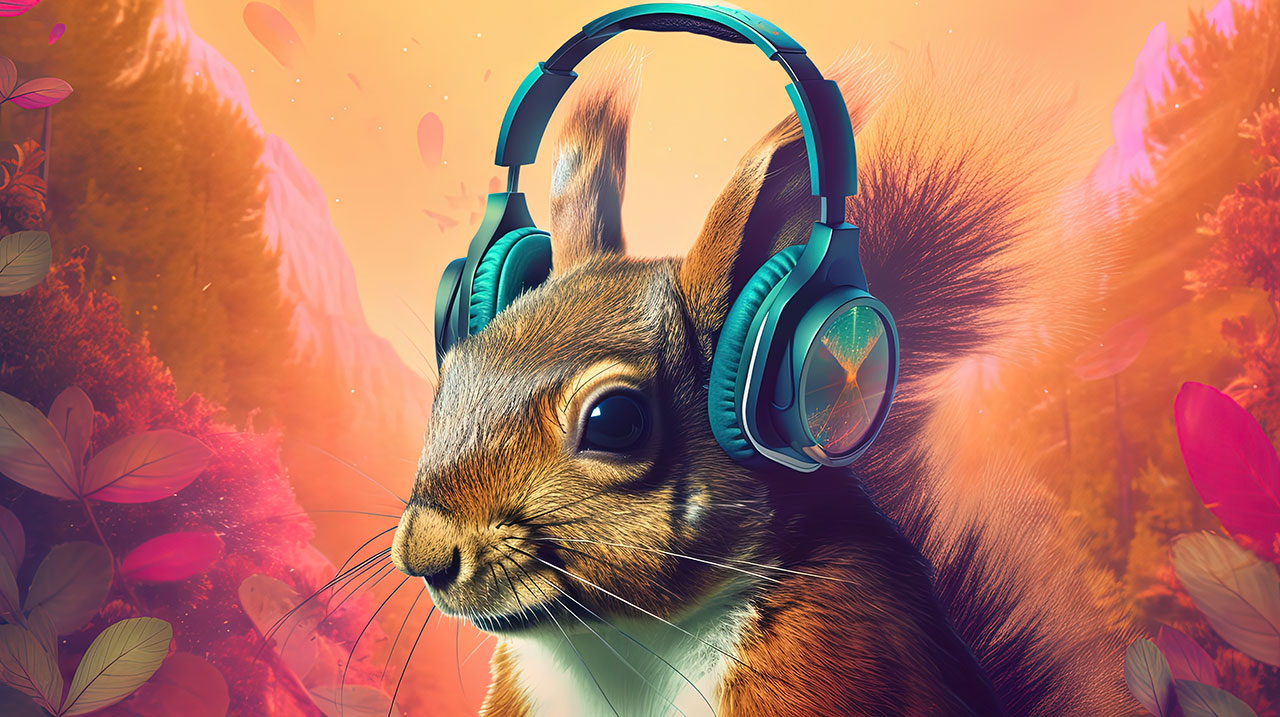People with ADHD are often excellent at hyperfocus and getting into the flow state when they are doing something they are passionate about.
The modern world often demands from us a near inhuman amount of focus and attention.
From school to our jobs we are asked to maintain the tasks at hand in our minds. Anything else is a distraction, and distraction is a problem.
Productivity appears to have little place for wandering minds and impulsive behaviour, and this is one of the reasons those with ADHD struggle.
But rather than highlighting the difficulties that people with ADHD face in society today, it’s worth paying some attention (if you can!) to the positive effects.
As we’ll see, ADHD and creativity are common sidekicks, and the links to flow state psychology highlight how intense focus is well within reach.
Even for those who don’t have ADHD, there are lessons to be learned that might give you a greater appreciation for the creative gifts that come with different types of attention.
ADHD Is Both A Gift and A Curse
ADHD is diagnosed when people have enough symptoms of either inattention and/or hyperactivity/impulsiveness. Despite the name, it’s less an attention deficit than a problem regulating it.
Some research suggests there is a difference in the brain’s reward pathways for people with ADHD, specifically lower dopamine transporters. Other research into the ADHD highlights lower working memory capacity, which makes for greater difficulty holding information in mind.
It is not difficult to see where the difficulties lie. Getting things done means being able to concentrate on them long enough to see them finished. If you cannot do that, you’ll have a lot of unfinished projects lying about.
But why then do some of the most successful and creative entrepreneurs have ADHD?
Virgin founder Richard Branson, inventor Dean Kaman, and internet pioneer Alan Meckler have all been diagnosed with ADHD. Many others throughout history likely had it before there was any recognition of it.
Did they overcome a problem to find success despite it? Or did they use it to their advantage?
Activating The Imagination Network
There’s a lot of research highlighting the links between ADHD and creativity.
Others have found that the personality traits associated with creative people overlap with ADHD — things like daydreaming, sensation seeking, spontaneous idea generation.
Those traits align with a brain network called the default mode network, or DMN. This network was discovered when Marcus Raichle was scanning the brains of people while they completed different tasks.
However, it wasn’t during the tasks that the DMN was active, it was in the downtime between tasks.
The DMN is active when we disconnect from the external world and engage in internal streams of thought. This is daydreaming in a nutshell, an activity many of the world greatest artists have made great use of.
Those with ADHD struggle to suppress the DMN. This means they’ll be sucked into internally generated thought more easily, and that can come at the expense of external tasks.
Daydreaming students get a bad rap, and the DMN certainly looks like a big culprit in distractibility, but the reality is more complicated.
Distracted students and those with ADHD are using one of life’s creative gifts — a brain network specialising in imagination.
But an active imagination doesn’t guarantee success. There is still something missing that can make ADHD an advantage.
Hyperfocus And Flow States
It would be a mistake to characterize ADHD as having a short attention span, as periods of intense focus are also common. A more apt description is a ‘maldistribution of attention.’
As Rony Sklar points out: “It’s not about having an attention deficit, it’s more a maldistribution of attention. It’s not about not being able to concentrate; it’s about being able to concentrate in different forms and different intensity.”
One of these forms of attention is hyperfocus. Those with ADHD don’t always bounce about, often they become so engrossed in something that they become oblivious to everything else.
Those with ADHD generally struggle to pay attention to boring and repetitive activities. Once they find something they’re interested in, good luck getting them to stop.
School can be a little boring at times, and many tasks in our jobs can be routine and mundane, even if they’re necessary. Everybody can struggle with them, but those with ADHD even more so.
This suggests that the right activity can bring out their best, harnessing those aforementioned creative gifts in a long-lasting state of hyperfocus, and curbing the negative effects of distractibility and impulsivity.
When this kind of laser-like focus on an activity is sustained long enough, someone with ADHD can tap into what’s called the flow state.
ADHD And Flow State Psychology
Hyperfocus and flow share many similarities, but where flow is looked upon positively, hyperfocus is closely associated with ADHD and can be viewed negatively, especially when it’s directed at the “wrong” task.
But hyperfocus can be incredibly positive when directed at the right task, and the qualities which promote flow are also those that can engage hyperfocus, giving us a great roadmap for bringing out the best of ADHD.
Here are 5 things to consider for finding an activity that can help get into the flow state:
1. Personally Meaningful
The first thing is to find a task that sparks your curiosity and gives you the sense that you are in control of the process. The less interested you are in an activity the more easily you’ll grow bored and get distracted.
2. Challenge/Skill Ratio
The activity shouldn’t be too easy as that will also promote boredom, but at the other extreme being too difficult will make progress and a flow state near impossible.
3. Clear Goals:
It’s difficult to tell the difference between being on-task and distracted if you don’t know where you’re supposed to be going, this makes a well-defined goal essential to being properly engaged.
4. Feedback Loops:
The longer you have to wait for feedback regarding your actions, the harder it will be to stay in the moment and adjust while in flow. Like the goals, you’ll also benefit if the feedback is as unambiguous as possible.
5. Accountability:
Having some consequences attached to the task will increase its meaningfulness by placing some pressure on you.
The more of these criteria your task has, and more effortless it should feel to tackle it. This is important for those with ADHD — wilfully directing attention is difficult, the less effort needed to focus the more successful and productive the results will be.
A Hunter In A Farmer’s World
American author and talk show host Thom Hartmann posited a theory known as the hunters vs farmer hypothesis, which compares those with ADHD to hunters, while those without it resemble farmers.
Farmers need to do routine tasks with consistency, whereas hunters must be constantly scanning the environment, on the lookout for prey and predators. Both are necessary for a well-functioning society.
This might not be just a metaphor, as there is some empirical support from the nomadic Ariaal people of Kenya.
Seen in this way, ADHD is less a disability than a specialized role that the modern world doesn’t appreciate as much as it should. And as flow state psychology teaches us, it’s also possible for farmers to hunt when necessary.
Splintered attention at uneventful times can promote creativity and spontaneous idea generation, but when prey is spotted hyperfocus should take over to compel the hunter towards their goal.
While routine tasks are a necessary evil for most of us, it’s creativity and hyper-productivity that push the boundaries. Those with ADHD are perfectly moulded for that role, but all of us can engage in it too.
- 10 Tips, Tricks And Tools To Overcome ADHD Paralysis - March 19, 2025
- 10 Interesting Facts About Adult ADHD And Mental Health - March 18, 2025
- 15 Ways To Manage ADHD Without Meds By Biohacking Dopamine - February 14, 2025




